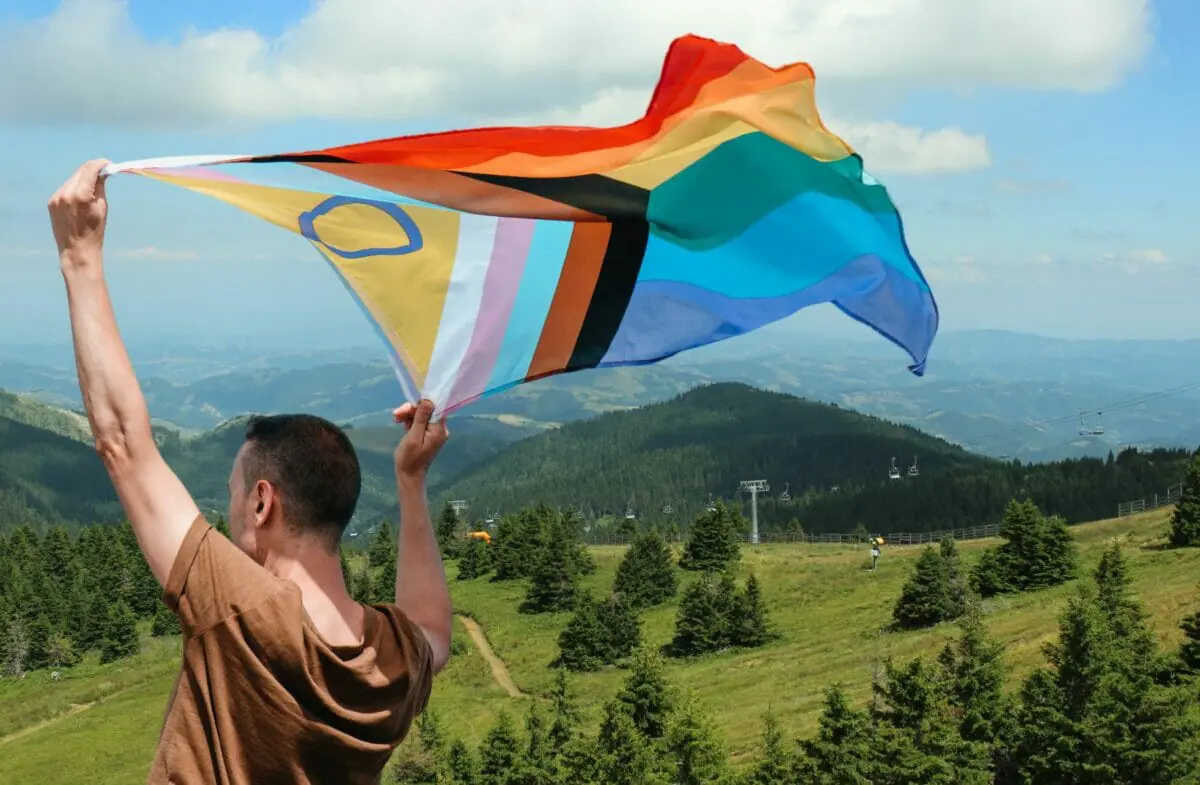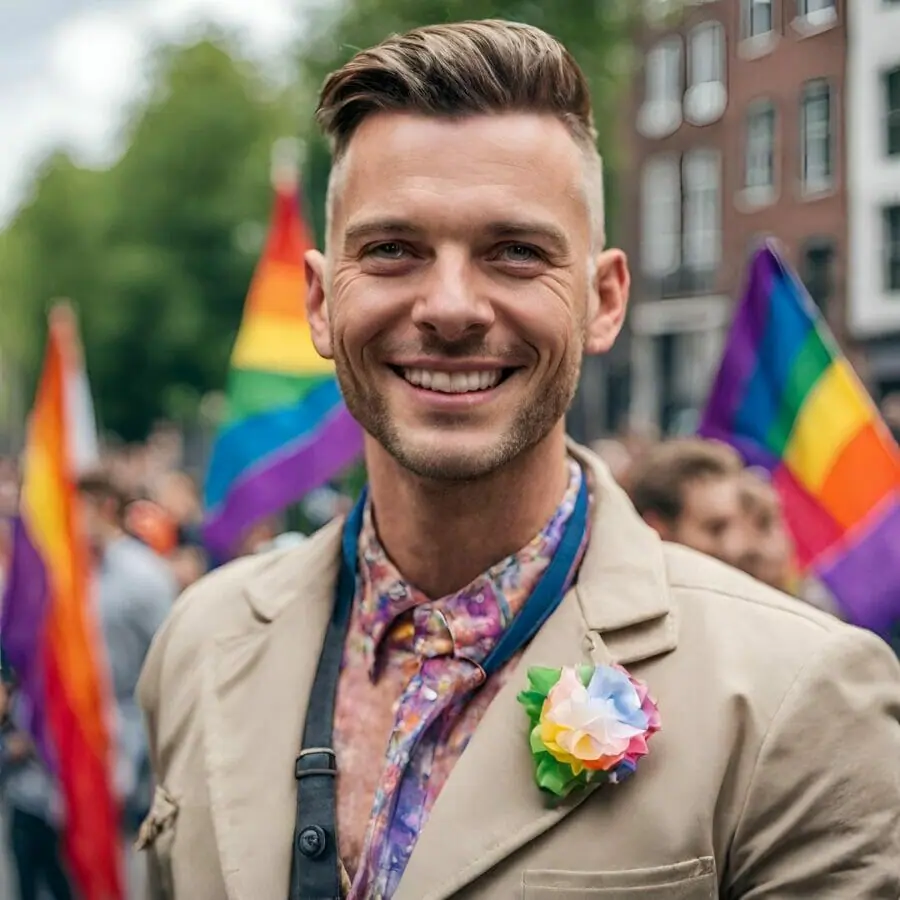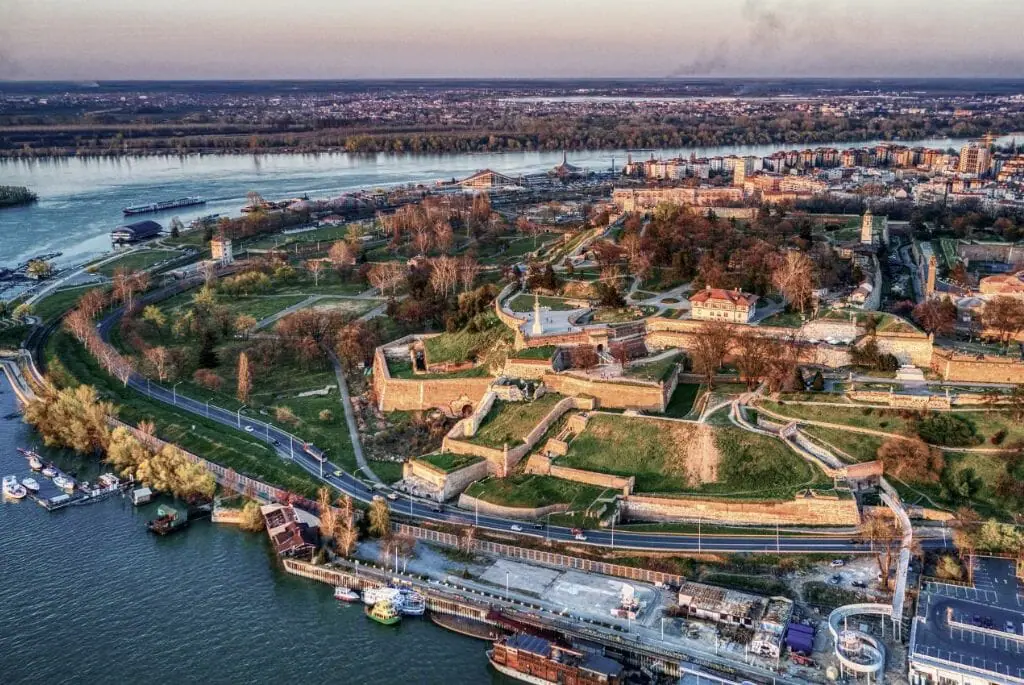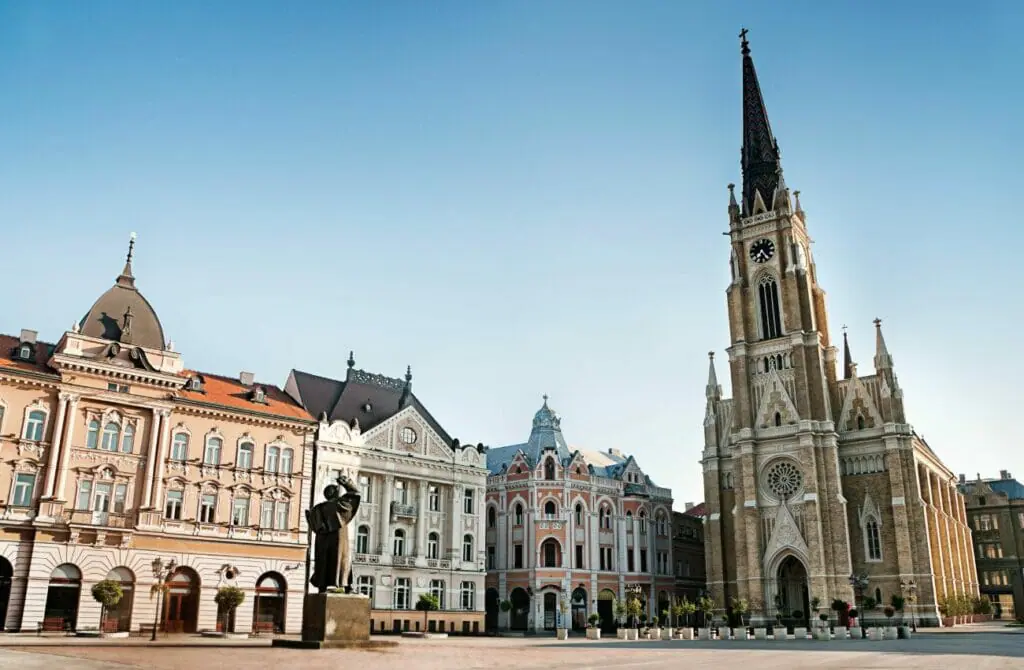Ah, Serbia! A land rich in history, culture, and natural beauty, where the confluence of East and West meets under the sprawling Balkan skies. At its heart, Belgrade stands timeless, with its bustling streets echoing tales from ancient Roman times to the lively present.
Gay Serbia, as a vibrant undercurrent, is a tapestry interwoven with courage, pride, and resilience in the face of adversity.
To the intrepid LGBTQ+ traveler, Gay Serbia offers a tantalizing taste of its nightlife, particularly in urban pockets like Belgrade and Novi Sad. From pulsating bars and underground clubs to more subdued, queer-friendly coffeehouses, Serbia’s nightlife can be electrifying.
But it’s crucial to note that this thrilling scene is a bubble within a nation where conservatism still runs deep. While you’ll find local LGBTQ+ communities that are fiercely proud and have fought for every inch of visibility, their experiences starkly contrast with the rainbow-decked streets of pride events in Western Europe.

However, let’s not paint too rosy a picture. Serbia’s political and social environment for the LGBTQ+ community is fraught with challenges. While homosexuality is legal, there are no protections against discrimination in many spheres of life.
Gay Serbia has seen its pride parades met with violent opposition in the past, and reports of hate crimes, though not as frequent, still surface. While the law does not frequently enforce repercussions for LGBTQ+ activity, the social stigma can often be punishing. It’s a land of paradoxes where a night of revelry could quickly turn sour if one isn’t discreet.
So, why venture into Gay Serbia? Travel, after all, is as much about understanding the world as it is about enjoying it. Every journey has the power to foster cultural exchange, open minds and spread the message of pride and understanding. But with Serbia, tread with caution.
If you’re someone who isn’t willing to occasionally hide aspects of yourself or subtly change behaviors, Serbia might prove challenging; for those who believe in the transformative power of travel and its potential for positive change, Gay Serbia beckons, but with a clear caveat: Safety first, always.
Remember, while we firmly believe being queer should never be a barrier to experiencing the wonders of the world, your well-being and safety come first. Navigate the beauty and complexity of Gay Serbia with care, respect, and an open heart.
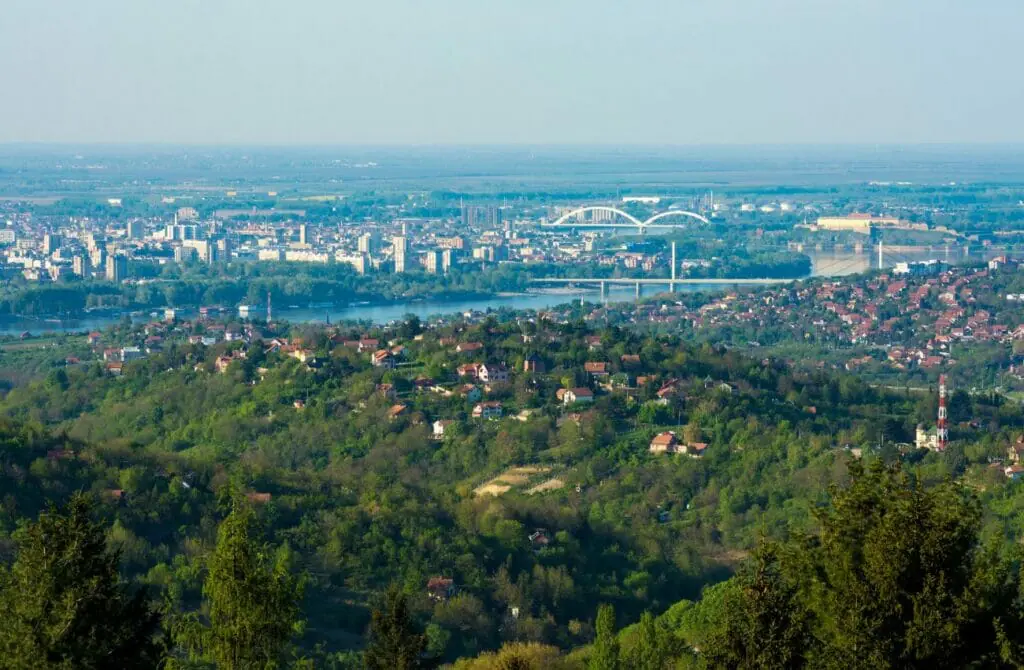
History Of LGBT Rights In Serbia
The journey towards LGBT rights in Serbia has been a challenging one, with many milestones marking the way. Homosexuality was first criminalized in 1860 during various regimes, but progress was made in 1977 when the Socialist Autonomous Province of Vojvodina decriminalized it. Fast-forward to 2009, Serbia adopted its first anti-discrimination law that explicitly mentioned sexual orientation and gender identity.
While there have been laws and measures passed to criminalize discrimination, violent acts, and hate speech based on Sexual Orientation and Gender Identity (SOGI), LGBT individuals in Serbia continue to fight for their rights to lead a normal life. It is important to note that the situation can change quickly, and information can be out of date. It is always essential to seek current advice before traveling.
For local people, the struggle for LGBT rights and acceptance has led to various events and initiatives geared toward raising awareness and fostering understanding. One significant marker in this journey was the first Pride Parade held in 2010, demonstrating a growing movement for LGBT rights in Serbia.
On the other hand, tourists should be aware of the local context and remain vigilant, as there are always bad actors in every country. If necessary, steps can be taken to protect oneself, such as being cautious with personal information and staying informed about current situations and events.
Numerous LGBT advocacy groups support this ongoing struggle for rights and acceptance in Serbia. These organizations can provide valuable resources and support for both local people and tourists who may need assistance navigating the unique challenges that LGBT individuals face in Serbia.
So, let’s celebrate the progress made while also recognizing the ongoing fight for equal rights and acceptance for the LGBT community in Serbia. Remember always to remain vigilant and informed, as situations can change rapidly, and ensuring your safety and well-being is paramount.
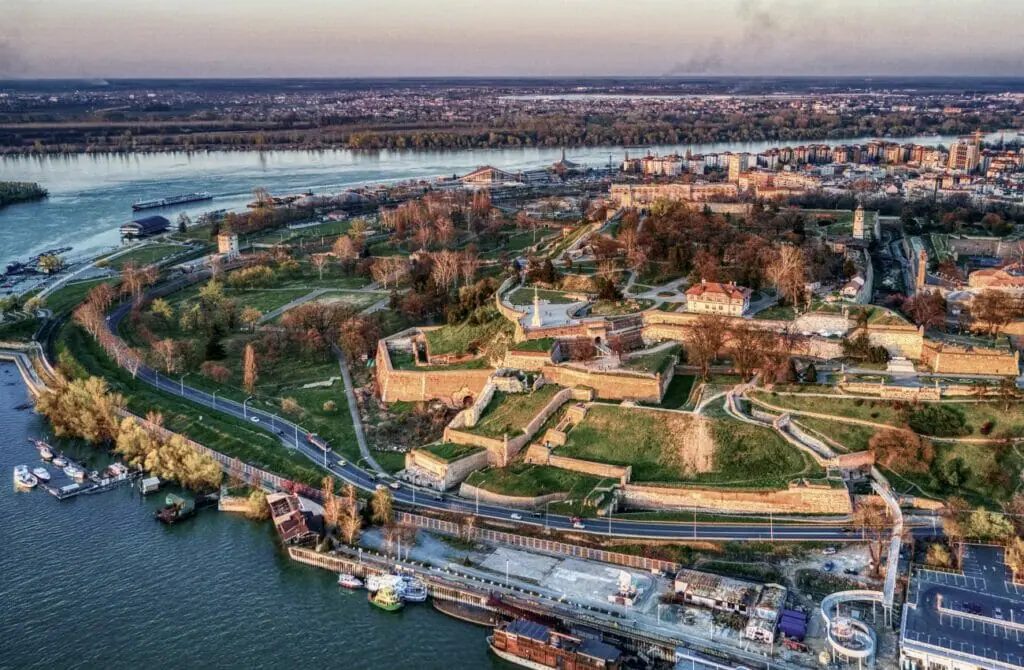
The LGBT Legal Situation In Serbia
Serbia has made progress in recent years when it comes to LGBT rights. Both male and female same-sex sexual activity is legal, and discrimination on the basis of sexual orientation in areas such as employment, education, media, and the provision of goods and services, among others, is banned. However, it is important to note that same-sex marriages are still not recognized in the country. The Constitution explicitly defines marriage as being between a man and a woman.
Despite the legal protections in place, it is crucial to understand the situation for locals and tourists may vary. While the general environment is becoming more accepting, it is essential to remain vigilant and cautious, as bad actors are present in every country.
For those who need support or assistance while in Serbia, there are LGBT advocacy groups that can help. They are well-versed in the current situation and can provide up-to-date information. It is important to be aware that the situation can change rapidly, and it is vital to seek current advice before traveling to ensure your safety and well-being.
In conclusion, although Serbia has taken steps forward in terms of LGBT rights, it’s necessary to be cautious and informed about the current situation. Be sure to stay up-to-date with the latest information and connect with the appropriate advocacy groups to ensure a safe and enjoyable experience.


The LGBT Social Situation In Serbia
Serbia has made some progress in recent years when it comes to LGBT rights. In 2021, ILGA-Europe ranked the country 23rd out of 49 European countries in terms of LGBT rights. This progress can be seen in Serbia with an openly gay Prime Minister, Ana Brnabić, who took office in June 2017. However, there is still work to be done, and being LGBTI in Serbia can present challenges.
For local people, laws have been passed that criminalize discrimination, violent acts, and hate speech based on sexual orientation and gender identity (SOGI). While these laws are a step forward, more needs to be done to ensure that LGBT rights are fully recognized and that the community feels protected.
Tourists may have slightly different experiences while visiting Serbia. It is important to stay up to date with the current policies and to seek advice before traveling. It’s good to remember that situations can change quickly, and it is always wise to remain vigilant during your visit.
In case you need support or protection while in Serbia, there are several LGBT advocacy groups that promote and fight for equal rights. Connecting with these organizations can be helpful, especially in staying informed about the current social climate.
Remember, it is crucial to stay aware of the prevailing situation, whether you are a local or a tourist. Laws and social attitudes can change rapidly, so always verify the current status of LGBT rights and protections in Serbia before taking any actions or planning a visit.
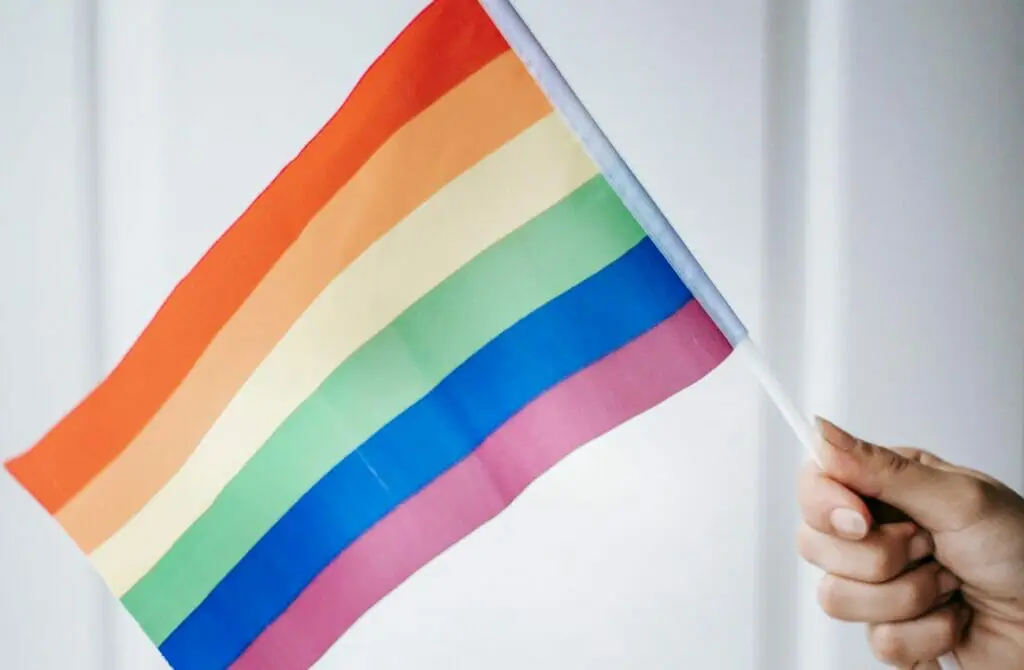
Trans Rights In Serbia
Serbia has made progress in recent years when it comes to LGBT rights, particularly for transgender individuals. In 2009, the country adopted its first anti-discrimination law that explicitly mentions sexual orientation and gender identity. Changing one’s legal gender is allowed without the requirement of surgery. However, non-binary gender recognition is not legally recognized yet.
While these advancements in legislation are a positive step, it is essential to keep in mind that the situation on the ground can change quickly. Public opinion about transgender people and their rights still varies, with some people holding conservative views. Therefore, both local people and tourists should remain vigilant and cautious.
In case of potential harassment or discrimination, it’s a good idea to be aware of LGBT advocacy groups that operate in Serbia. Organizations such as the Gay Straight Alliance and Da Se Zna work to promote LGBT rights, offer support, and provide up-to-date information.
As a visitor, it is always advisable to seek current advice before traveling. Situations can change fast, and information can become outdated, so staying informed on the most recent updates is crucial.
On a more optimistic note, there is a growing acceptance of transgender rights among the general population in Serbia. This progress serves as a positive reminder of the continuous effort put forth by local activists and advocacy groups to improve the lives of transgender people in the country.
So, while the excitement of exploring Serbia is warranted, it is important to stay informed, cautious, and vigilant. The combination of staying updated, connecting with local LGBT organizations, and being aware of potential environmental changes will ensure a safe and enjoyable experience for everyone.


The Future For The Queer Community In Serbia
As Serbia continues to grow and develop in terms of LGBT rights, the future appears increasingly positive. Significant developments have occurred in recent years, such as the election of Ana Brnabić, the first openly gay Prime Minister of Serbia, and the introduction of legislation to regulate same-sex civil partnerships. These steps demonstrate the country’s commitment to progress and inclusion.
While locals and tourists both experience the evolving landscape of LGBT rights in Serbia, it is important to be aware of the potential challenges. Although public opinion on same-sex unions is growing more favorable, travelers should remain vigilant and exercise caution when navigating unfamiliar territory. Since the situation can change quickly and information may become outdated, staying current on current events and advice is crucial before embarking on any journey.
Visitors should take measures to ensure their safety and well-being, such as researching accommodations that are known to be LGBT-friendly and avoiding public displays of affection in areas where it might not be well-received. By erring on caution and being mindful of one’s surroundings, travelers can make the most of their experiences while staying safe.
In addition to being informed about the current status of LGBT rights in Serbia, it’s essential to be aware of relevant advocacy groups working to create a more inclusive society. Organizations such as Civil Rights Defenders and the ILGA-Europe can provide valuable information, resources, and support for both locals and tourists navigating the country’s evolving landscape of LGBT rights.
With the excitement of change on the horizon, the future of Serbia’s LGBTQ community holds promise for a more inclusive and welcoming society. While challenges still remain, progress is being made, and the tides are steadily shifting in favor of equality and acceptance.

Protect Yourself While Travelling In Gay Serbia
LGBT rights in Serbia have improved significantly in recent years, with both male and female same-sex sexual activity being legal and discrimination on the basis of sexual orientation banned in various areas such as employment, education, media, and the provision of goods and services. However, it is essential to remain cautious and vigilant, as situations can change rapidly, and bad actors can be present in any country.
Visitors to Serbia, including tourists, should familiarize themselves with local laws and customs before traveling. Staying informed about the current political and social climate is crucial, as it can vary from region to region. Seeking advice and guidance from reputable sources and LGBT advocacy groups, such as the United Nations in Serbia, is an excellent way to stay up-to-date on potential issues.
While protections exist, it’s crucial to exercise caution in public spaces, particularly when expressing affection or discussing your sexual orientation. Although Serbian society has shown progress in its acceptance of the LGBT community, incidents of hate crimes and discrimination may still occur. One way to protect yourself is to be mindful of your surroundings and avoid heated discussions on sensitive topics, especially with strangers.
When it comes to protecting yourself, staying in touch with fellow travelers or friends in the LGBT community can provide a sense of security. They can offer tips on safe spaces, nightlife, and other relevant experiences that could enrich your visit to Serbia. Reach out to local LGBT advocacy groups and organizations, which may facilitate valuable connections and provide a support network during your stay.
Finally, remember that information can become outdated quickly, so seeking current advice before making travel plans is essential. Stay excited, informed, and cautious on your journey, and enjoy the rich culture and beauty Serbia has to offer.
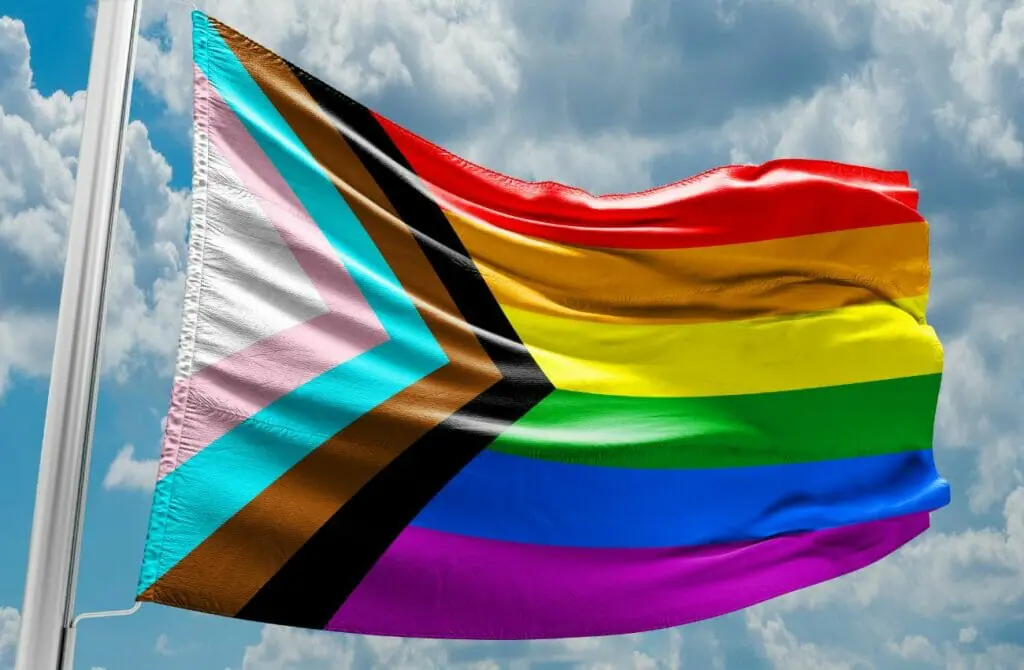

Most Popular Gay Destinations In Serbia
Ah, the enchanting land of Serbia! A nation where centuries of diverse cultures, traditions, and landscapes converge, beckoning travelers from every corner of the globe. From the bustling boulevards of Belgrade to the serene banks of the Danube in Novi Sad, Serbia offers a smorgasbord of experiences, each more captivating than the last.
For the discerning traveler, diving deep into the best gay destinations in Serbia reveals a multi-faceted world that resonates with the rhythm of both tradition and modernity. Cities in our list have been presented in alphabetical order, not just for ease, but to ensure we celebrate each vibrant destination without ranking them – for in Serbia, every city has its own unique tale to tell.
However, it’s imperative to remember a crucial nuance. While places like Belgrade and Novi Sad have emerged as popular spots within Gay Serbia, popularity does not equate to being gay-friendly. Serbia’s socio-political climate is complex.
Despite the allure these destinations hold for queer travelers, it’s essential to approach them with eyes wide open. While the heart of Serbia is warm and its people often welcoming, extreme caution is advised. For while the landscape sings a song of timeless beauty, the winds sometimes carry whispers of a less accepting past.
Belgrade, standing resplendently at the confluence of the Sava and Danube Rivers, narrates a tale of millennia where Roman grandeur meets Ottoman mystique and Austrian elegance. While Gay Belgrade’s shimmering nightlife and spirited Pride parades hint at a city embracing change, the architectural tapestry and rich history remind travelers of its timeless allure – a testament to resilience amidst a challenging landscape for the LGBTQ+ community.
In the heart of Serbia, Novi Sad emerges as a radiant gem, where echoes of ancient empires harmoniously blend with the pulsating beats of the EXIT Festival and a vibrant gay community that refuses to be silenced. Whether you’re immersing yourself in its rich tapestry of history along the Danube or dancing the night away beneath the shadow of Mount Fruška Gora, Novi Sad promises an intoxicating fusion of culture, celebration, and unyielding spirit.


